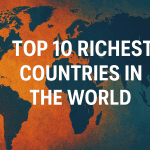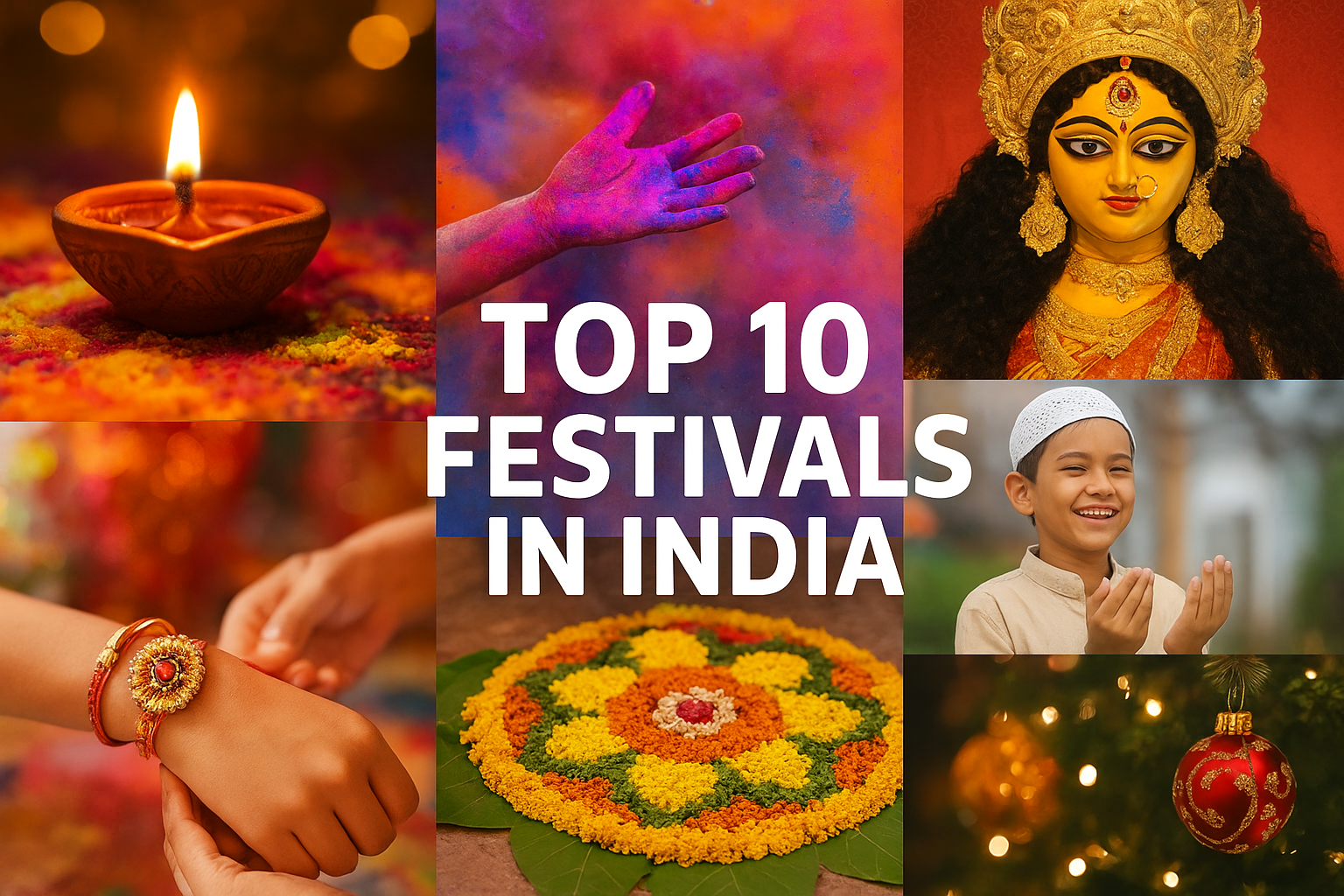India is famous for its colors, traditions, and festivals. Every month brings new celebrations that unite people and spread joy. These festivals are not just rituals—they are moments of fun, family, and togetherness.
👉 In this article, we will explore the Top 10 Festivals in India and understand why they are so special.
1. 🪔 Diwali – The Festival of Lights
Diwali marks the victory of good over evil and light over darkness. Families decorate their homes with lamps, rangoli, and fairy lights. Moreover, they worship Goddess Lakshmi, share sweets, and enjoy fireworks together.
👉 Best Time: October – November
2. 🎨 Holi – The Festival of Colors
Holi welcomes spring and celebrates the joy of life. People play with colors, sing, dance, and share festive treats. On the night before Holi, bonfires called Holika Dahan are lit to show the triumph of good over evil. In addition, many communities organize music and dance events.
👉 Best Time: March
3. 🎆 Durga Puja – Worship of Goddess Durga
Durga Puja is the biggest festival in West Bengal. Huge artistic pandals display idols of Goddess Durga. People also dress in new clothes, enjoy cultural programs, and eat traditional Bengali food. Finally, on the last day, idols are taken out in grand processions before immersion.
👉 Best Time: September – October
4. 🎶 Navratri & Dussehra
Navratri is a nine-day celebration of Goddess Durga. In Gujarat, people perform Garba and Dandiya dances every night. On the other hand, Dussehra marks Lord Rama’s victory over Ravana. Therefore, effigies of Ravana are burnt in many parts of India.
👉 Best Time: September – October
5. 🌙 Eid-ul-Fitr – Festival of Breaking the Fast
Eid comes after a month of fasting during Ramadan. Families wear new clothes, visit mosques for prayers, and prepare delicious feasts. In addition, sharing charity with the needy plays an important role in this festival.
👉 Best Time: Changes every year (lunar calendar)
6. 🧑🤝🧑 Raksha Bandhan – Celebrating Sibling Bond
On Raksha Bandhan, sisters tie a rakhi on their brothers’ wrists. In return, brothers give gifts and promise to protect their sisters. Furthermore, the festival strengthens the bond of love between siblings.
👉 Best Time: August
7. 🐘 Ganesh Chaturthi – Birth of Lord Ganesha
Ganesh Chaturthi is especially popular in Maharashtra. People install idols of Lord Ganesha in their homes and communities. After days of prayers, the idols are carried in huge processions and immersed in rivers or the sea. As a result, the entire state lights up with music, dance, and devotion.
👉 Best Time: August – September
8. ✝️ Christmas – Birth of Jesus Christ
Christmas is celebrated with joy in many parts of India, especially Goa, Kerala, and the Northeast. Churches are decorated with lights and stars. Moreover, families gather for midnight prayers, exchange gifts, and enjoy festive cakes.
👉 Best Time: December 25
9. 🌸 Onam – Harvest Festival of Kerala
Onam is Kerala’s grandest festival. It honors King Mahabali’s homecoming. People create flower carpets (pookalam), enjoy cultural dances, and watch traditional boat races. Most importantly, the highlight is the Onam Sadhya, a vegetarian feast served on banana leaves.
👉 Best Time: August – September
10. 🌾 Pongal – Harvest Festival of Tamil Nadu
Pongal is Tamil Nadu’s main harvest festival. Families cook a dish called Pongal, made with rice, jaggery, and milk. Homes are decorated with colorful kolam designs, and cattle are dressed in ornaments for special rituals. In addition, people visit each other to share festive meals.
👉 Best Time: January
India’s festivals are more than celebrations—they are unique experiences. From Diwali’s sparkling lights to Holi’s bright colors, each festival shows the country’s diversity and unity. Moreover, if you want to feel the real soul of India, plan your visit during these festive times.
Conclusion
India’s festivals are more than just celebrations—they reflect the country’s rich culture, deep-rooted traditions, and spirit of unity. From vibrant colors and joyous dances to delicious food and heartfelt rituals, each festival brings people together, bridging communities and generations. By experiencing these festivals, one can truly appreciate India’s diversity and the values that connect its people. Embrace the festivities, immerse yourself in the traditions, and celebrate the joy and harmony that define India.









